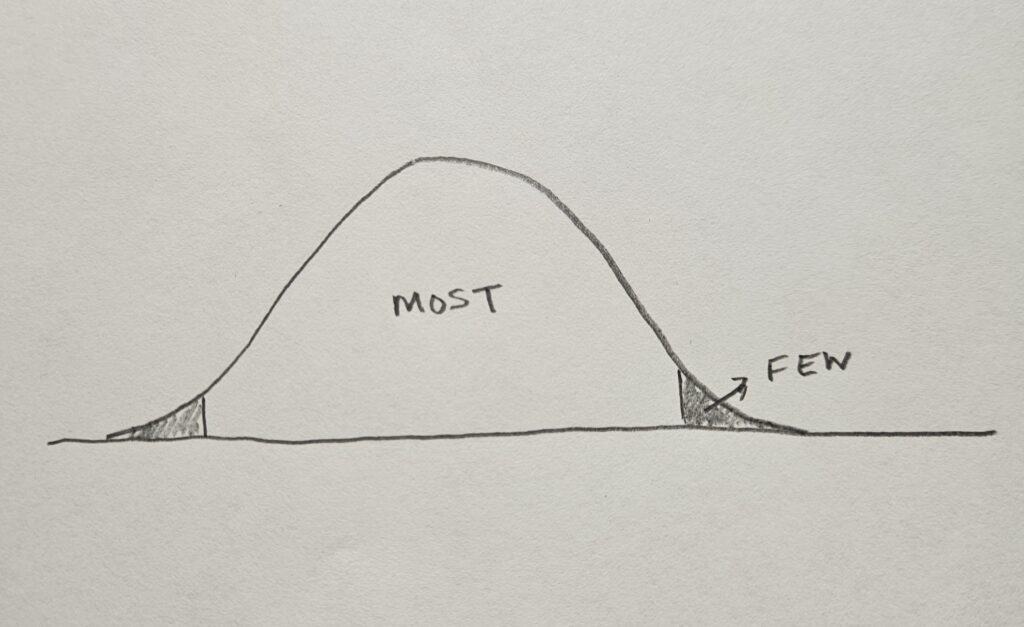Bigger, better, faster, stronger this is what we hear on the daily. The incessant call to accomplish more, and push harder echoes across our culture. This message is inherent in a capitalistic, production based, able-bodied, early bird society. Many of my clients, several of whom are ex-athletes, but also deal with chronic health conditions, come to me in a lot of pain and are frustrated with their bodies and perplexed that pushing harder has not gotten them better. They are forced to reflect on whether the prevailing message of high intensity exercise is the only path to garner fitness, and whether it’s the only level of fitness to strive for. Might all of us benefit from the same reflection and unpack the value assigned to high levels of fitness, and ask why do we deem only certain levels of fitness as worthy?
My clients who competed in athletics gained value, accolades, self-esteem, and a hundred other benefits from their exceptional athletic abilities. Some of them hold onto the high level of ability even when they have left the competitive arena. After all, their ability was integral to their identity, fueled their self-esteem, had health benefits, and as stated above, pushing to high levels of fitness is lauded in our culture.
What happens when these athletes’ ability is chipped away or taken away completely? What happens when pushing 110 percent backfires on them? Injury, illness, or chronic conditions have left them unable to make gains or maintain their desired level of fitness. They sense being left behind, defeated, and feel a loss of identity when they are no longer exceptionally fit. They can become frustrated, angry and depressed by their body’s inability to run that 6 minute mile, lift 200 plus pounds, or climb that rock face like they once did.
Adding to their frustration, the message of being superhuman strong is hard to shut out and even more potent due to the fact that most everyone is ingesting fitness advice via social media. Social media is a competition for eyeballs. Our eyes are not stopping at a middle aged woman walking around the block, they’re looking for grandma doing dips, and flips. They’re looking for the beefy, Herculean strong, handstanding incredible feats. Reasonable and measured does not win the race at the social media track meet. It screams at you that “You TOO can kick butt at 93!”, or if you just “have enough grit you TOO can be an Olympian”.
But can we or should we? If you flip the statement above, the message becomes you couldn’t be amazing because you didn’t have enough grit. How are the majority of people who can’t perform at stratospheric levels supposed to reconcile with their earthbound fitness levels?
My clients have chronic health conditions where they may not regain their past level of fitness. How do we start to reframe and give this population back a sense of accomplishment and pride in their more earthly achievements? Compassion, and acceptance for the new norm is key here, as well as reframing their fitness ideas. They need to start to embrace that they can still have fitness goals but the goals themselves, intensity and dosage needs to be recalibrated.
For one client who played tennis, and did trail running, she pivoted to pickleball, and hiking less miles on easier terrain. These new activities still had elements of her old skills with the intensity dialed down a bit. For the ex-power lifter we slowed down the moves, and created intensity with isometric holds, or finding subtlety and directed intention in the exercise, creating difficulty with more focused and subtle moves. She could still get a sense of effort exerted without such a large degree of load on the body.
Many, like the power lifter, miss the high intensity, that burning of lungs and muscles that lights them up, and pumps out a bunch of feel good endorphins and exhilaration. For the lifter she found she was still able to feel the intensity without the extreme weight. For ex-runners taking long flights of stairs at 2 by 2, or doing small bits of sprints if they can, can give them that glimmer of lungs burning intensity that they crave without beating their body up too much.
Even with these new goals and compassion for self, my clients still are surrounded by able-bodied folks doing all their cool tricks. For those clients who have an unhealthy comparison schema I suggest much the same that is being prescribed for most social media interaction, decrease it, or quit it altogether.
Another important concept in reevaluating degrees of fitness came up with a client exasperated by the omnipresent lofty fitness ideal. I explained that the super fit individuals in the media that we hold to be the standard bearer of fitness are indeed not the standard at all, they are outliers. You have to think about what an outlier is. In the world of statistics there is a bell curve in a set of data, the majority (68% of the data) live within two standard deviations from the middle of the curve. The outliers are those on the tail ends.

If you are only looking at the top percentages of the data they comprise a mere 2.1% of the population, not standard or average at all, and possibly out of reach for most of the population, much less folks with chronic health issues. For her this idea enabled her to reevaluate, and value where she was presently, and modify her goals accordingly.
The never ending mantra of “Don’t let age, injury, genetics, fill in the blank hold you back from reaching for the stars” are commendable in theory but there needs to be other options and messages. The ideas I have posited could be deemed defeatist by the fitness industry, holding people back from reaching their most lofty goal. I like to flip this as well. If you give someone such a lofty goal that they will never reach it, and in the end they are defeated, you tell me which is the more defeatist. In this case the “realistic” or more earthbound goals may be the wiser choice. Our population as a whole is not getting fitter or healthier by only supporting the idea of supreme fitness, so we might want to rethink the message.
Thankfully there is research supporting that this less flashy, but less intense exercise can still be beneficial. Gretchen Reynolds found that just 10 minutes of walking and 7000 steps can be beneficial for longevity and general health outcomes.
Exercise and increasing fitness levels has value. I am after all a personal trainer, and for those individuals who thrive with lofty goals and high intensity, enjoy your journey. It just might be wise to consider there are many routes to take with a multitude of journeys. So the levels and dosage of fitness needs to be considered more thoughtfully, especially for those with chronic conditions. I think walking for 20-30 minutes, 3 times a week, and doing 2 bouts of a 15-20 minute strength routine needs to be valued a bit more. Fitness can be increased with this amount of input. For those times when strength gains elude people or they plateau I often joke about the fact that as we age several fitness parameters decrease about 1% per year, so just maintaining one level of fitness is relatively increasing because of the daily entropy of aging.
It’s not an easy journey letting go of a piece of identity, your high fitness level, that was so integral to what makes you you. I try to push people to explore and reflect on their past level of fitness, what it did for them, what it meant for them, and remind them they can still pull wisdom from that experience. I also ask them to reflect on how hard they needed to drive to perform at those past levels. They may notice that with a different lighter program they have less pain not pushing so hard, more energy for their family, enjoy movement more, and have more time freed up to explore other areas of interest.
Sometimes they may be laid up for a month with migraine, fatigue, or other illness, I remind them it’s all a journey and over a lifetime, a long journey. Fitness and strength gains will go up and down, focus on the day in front of them and do what they can, and most of all value the level of fitness they have for that day.
[Feature Photo by Shane Kell via pexels.]

